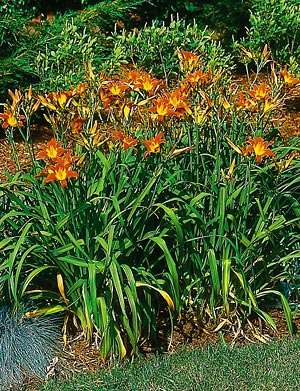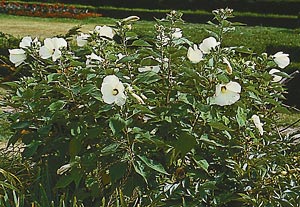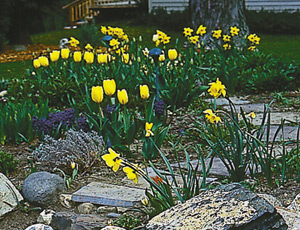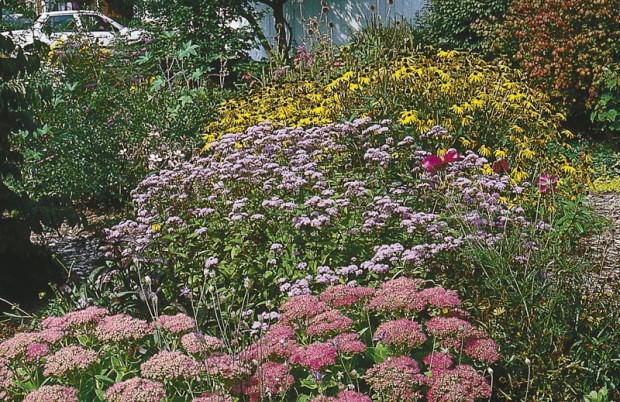
By Janet Macunovich / Photographs by Steven Nikkila
Politics has made “cover up” a dirty term. Its meaning in the garden has more dignity, although there’s still soil and clever timing at the base.
Spring can be like the glorious first days of a new administration that was voted in by a large majority. Such excitement and promise!
For shame, then, that I’m already looking for a cover up.
The crocuses (especially the early favorite snow crocus, Crocus minimus), snowdrops (Galanthus nivalis), winter aconite (Eranthis hyemalis), wood anemones (Anemone blanda), squill (Scilla sibirica), and puschkinia (Puschkinia scilloides) are not of concern. Early to rise, small in stature, and blessed with fast metabolisms, they’re up, bloomed, and neatly gone by early June. Even the grape hyacinth (Muscari sp.) and early species tulips (Tulipa praestans, T. tarda, T. greigii hybrids) of late April and early May aren’t bad—they are short enough and early enough to be only minimally distracting during their exit.
But oh, those daffodils and late tulips! How many times have I muttered over their tired-looking but still green foliage lying around to spoil even July’s show, and vowed never to plant another of these lackadaisical leave-takers? I’ve come close to swearing off bulbs all together, especially when I add in problem children such as the very early bulb iris (Iris reticulata hybrids), which bloom only 3 to 4 inches tall, but follow up with 18 inches of grassy foliage that remains into June, sticking up through other plants begging to be mistaken for invading grass.
Additional challenges present themselves in the form of grassy tufts of fall crocus foliage (Crocus kotschyanus) and clumps of wide, strap-like leaves from colchicum (Colchicum autumnale). What to cover that bare spot during mid-summer, but make it visible again in early October when their short-stemmed, lilac-colored flowers show?
Every year I stumble on, steal, dream up, and improve on techniques to usher bulb foliage out more gracefully. I’m sharing some of my best cover-ups here.
Ploy #1
Bring in a sleeper perennial and create a distraction while the two switch places. During this transition period, it helps to create the distraction to one side, with something showy and loud such as bearded iris, early daisy (Leucanthemum varieties) or poppy (Papaver orientale).
Many perennial species wait until the soil warms up to emerge. Many of these sleepers peak in late summer and fall, giving that area of the garden a whole new face for that late season. Planted among the bulbs they are meant to hide, these perennials rise gradually among the bulb foliage, giving the opening act time to ripen and die back its foliage before being swallowed up:
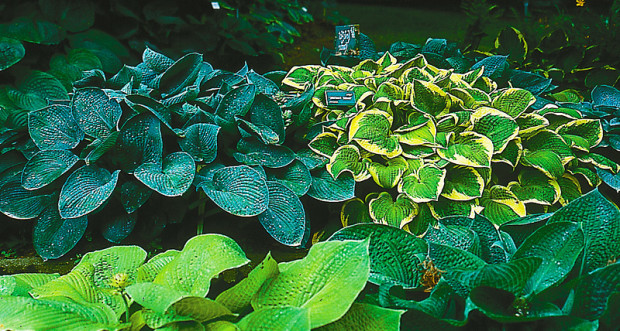
Hardy hibiscus (Hibiscus moscheutos). Most first-time growers of hibiscus figure it died over the winter, since nothing shows until early or mid-May. A lover of moisture, hibiscus is well-suited to cover bulbs that also like lots of water, such as quamash (Camassia sp. and hybrids) and bulb iris.
Joe pye and its relatives (Eupatorium sp., especially E. coelestinum, the perennial ageratum or blue mist flower). These are often hard to find because garden centers can’t seem to sell them well. In spring, they look like and have all the sales strength of pots of soil. Given a week of warm nights though, they pop up like weeds. Perennial ageratum is worth hunting for, however. Blue flowers in August on 18-inch stems, shallow running roots that allow it to weave among bulbs without interfering with their growth, and a high tolerance for shade are all marks in its favor.
Japanese anemone (Anemone x hybrida). This gem is best for half shade, but willing to perform decently in sun or shade, it too holds back on leaf production until the soil warms, then surges up to hide its predecessor. Coming from many thin, running roots, it doesn’t form dense crowns that can eventually impede a companion bulb’s entry. Its pink, white or mauve flowers on 36-to 48-inch stems are showstoppers in August or September.
It’s best to interplant established bulbs with small, bare root pieces or small pots of these companions. Look for one-quart pots or even smaller plugs.
Ploy #2
Establish a self-sowing annual among the bulbs. Pot marigold (Calendula officinalis), garden balsam (Impatiens balsamina), love-in-a-mist (Nigella damascena) and bells of Ireland (Moluccella laevis) are some that I use. Sow the seeds now, pressing them into the soil among the bulb foliage and withholding mulch there until they can emerge and be thinned.
Ploy #3
Plant a late spring-or summer-blooming perennial with similar foliage to mask the bulbs’ exit. Daylilies (Hemerocallis) and daffodils are a classic. Sea pink (Armeria maritima), with its grassy foliage, is a natural to hide fall crocus. Blue fescue (Festuca glauca) does a great job of absorbing and hiding bulb iris foliage.
Ploy #4
Provide a perennial with wide skirts to spread across the top of the bulb area. Hostas do a great job of hiding bluebells (Mertensia virginica and Scilla campanulata). Perennial fountain grass (Pennisetum alopecuroides) does an admirable job of masking a tulip’s departure.
Ploy #5
Use die back shrubs that can be cut back hard in early spring as early bulbs under its branches are beginning the show. Butterfly bush (Buddleia davidii) and giant allium (Allium giganteum) are a natural combination. Bluebeard (Caryopteris x clandonensis) and other, shorter alliums work well together (Allium moly, A. neapolitanum, A. roseum, A. caeruleum).
Have fun trying these!
Janet Macunovich is a professional gardener and author of the books “Designing Your Gardens and Landscape” and “Caring for Perennials.” Read more from Janet on her website www.gardenatoz.com.

